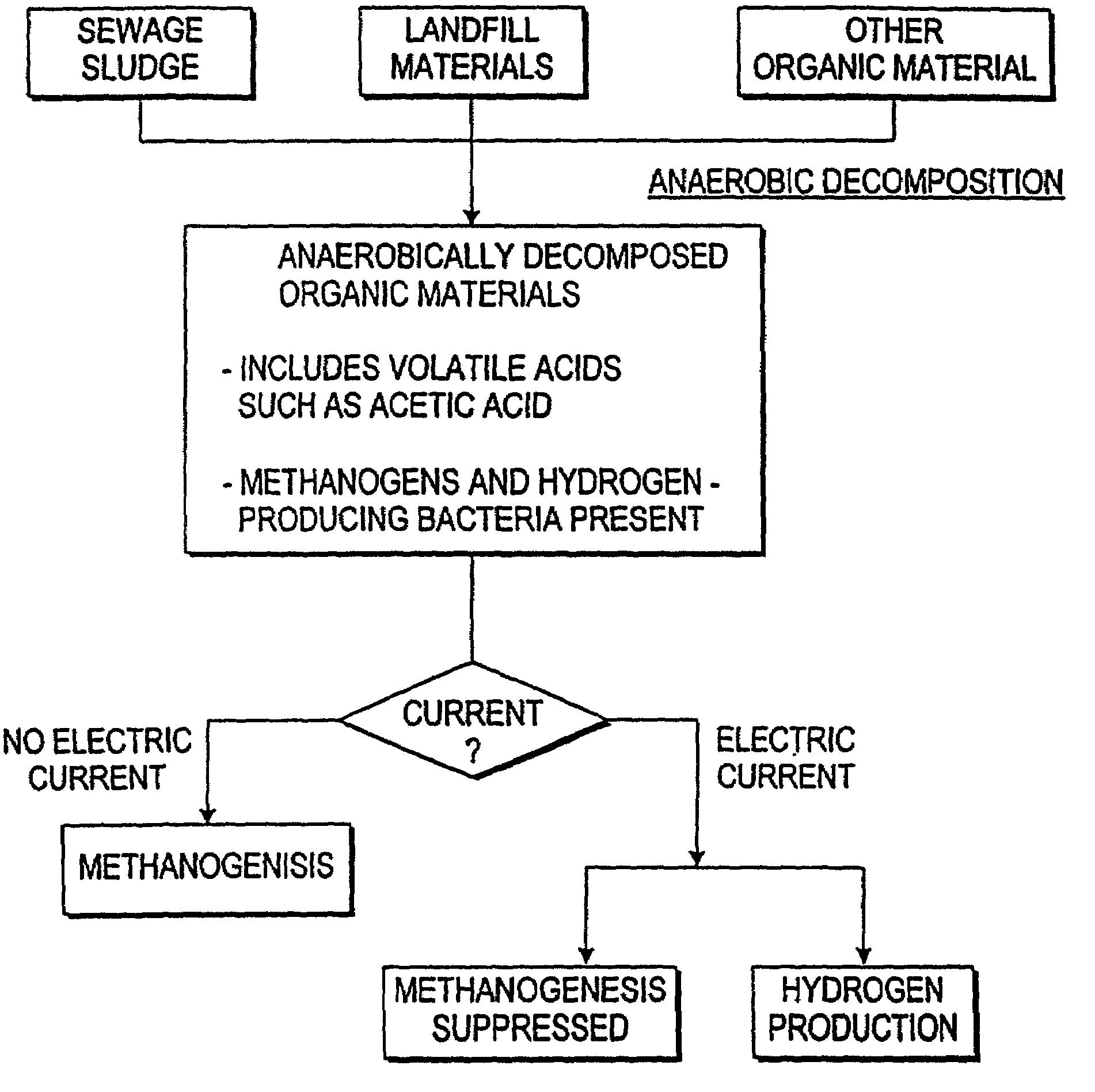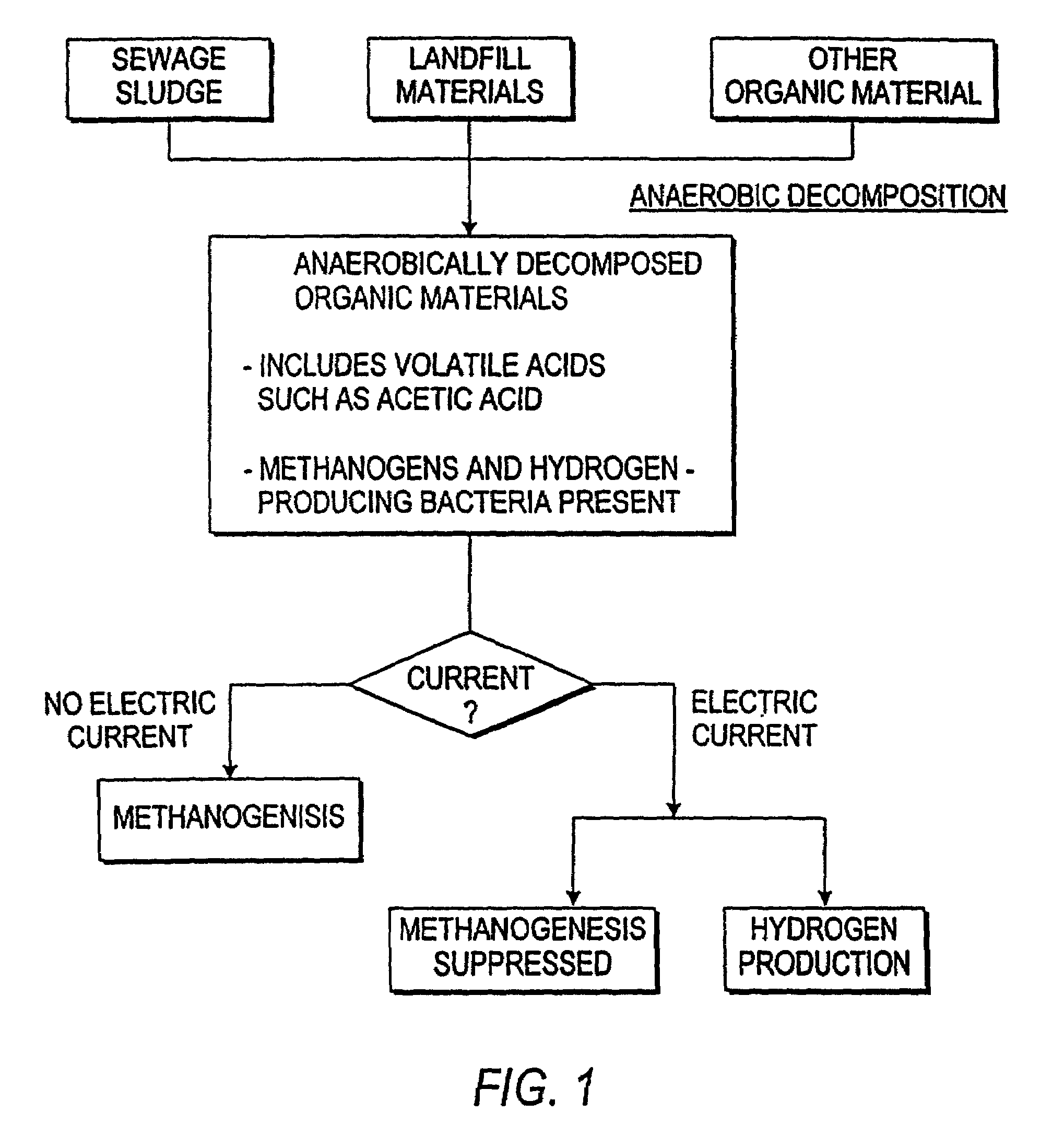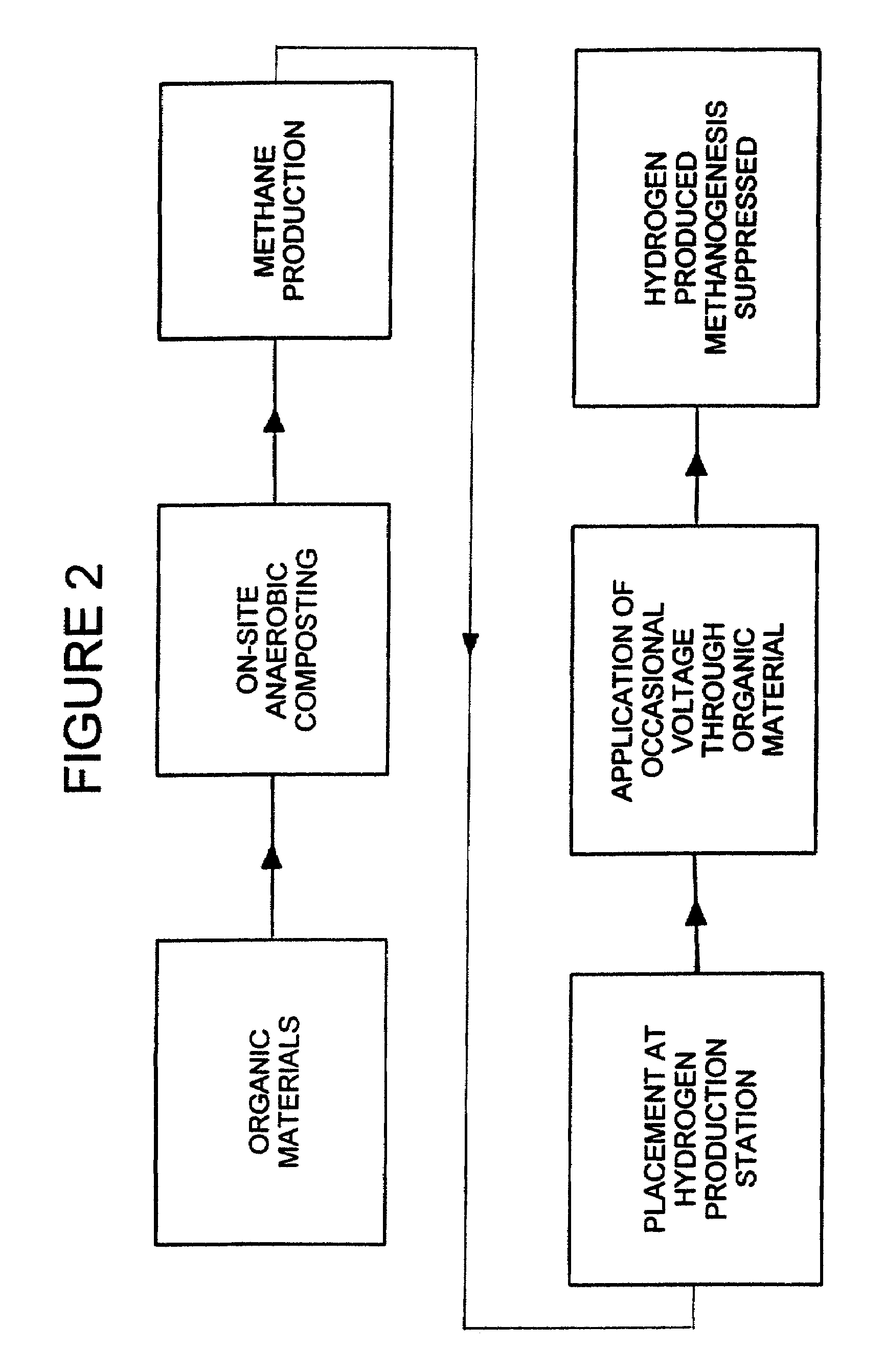Process for production of hydrogen from anaerobically decomposed organic materials
an organic material and anaerobically decomposed technology, applied in the direction of gas-gas reaction process, separation process, energy input, etc., can solve the problems of increasing the cost of fossil hydrocarbon fuels, consuming fossil hydrocarbon fuels, and increasing the cost of hydrogen production by electrolysis of water, so as to reduce the cost, reduce the time, and increase the rate
- Summary
- Abstract
- Description
- Claims
- Application Information
AI Technical Summary
Benefits of technology
Problems solved by technology
Method used
Image
Examples
example 1
[0045]As an experimental control, freshly obtained sewage sludge in an 800 ml flask was placed at 37° C. in an incubator gases, including primarily methane, were produced as described at Table 1 and depicted at FIG. 3.
[0046]
TABLE 1Production of CH4 and CO2DAYS% CH4% CO2% N2165305270255370255465304560354655405
example 2
[0047]Sewage sludge from the primary digester was placed in an 800 ml flask which was then placed in a preheated incubator at 37° C. Methane gas was generated. As soon as optimum production of methane was achieved, a current was passed through the liquid in the flask. The production of methane gas declined gradually and hydrogen and carbon dioxide were produced. Methane was completely suppressed when production of hydrogen reached its peak, as described at Table 2 and depicted at FIG. 4.
[0048]
TABLE 2Production of H2 and Suppression of CH4DAYS% CH4% CO2% H216035—27025— 3*45252042528465 530606TR3068
example 3
[0049]Sewage sludge from the primary digester was placed in an 800 ml flask which was then placed in an incubator at 37° C. A current was passed through the sludge, applying 3 volts, using the two 1.5 volt batteries in series. Very little methane was produced at the beginning. Within 3 days, production of hydrogen reached its peak and methane gas was virtually totally suppressed, as described at Table 3 and depicted at FIG. 5.
[0050]
TABLE 3Production of H2 and CO2 When Voltage WasApplied From the StartDAYS% H2% CO2% N2% CH41652528270252TR370188TR470208—568254—
PUM
| Property | Measurement | Unit |
|---|---|---|
| Electric potential / voltage | aaaaa | aaaaa |
| Electric potential / voltage | aaaaa | aaaaa |
| Electric potential / voltage | aaaaa | aaaaa |
Abstract
Description
Claims
Application Information
 Login to View More
Login to View More - R&D
- Intellectual Property
- Life Sciences
- Materials
- Tech Scout
- Unparalleled Data Quality
- Higher Quality Content
- 60% Fewer Hallucinations
Browse by: Latest US Patents, China's latest patents, Technical Efficacy Thesaurus, Application Domain, Technology Topic, Popular Technical Reports.
© 2025 PatSnap. All rights reserved.Legal|Privacy policy|Modern Slavery Act Transparency Statement|Sitemap|About US| Contact US: help@patsnap.com



